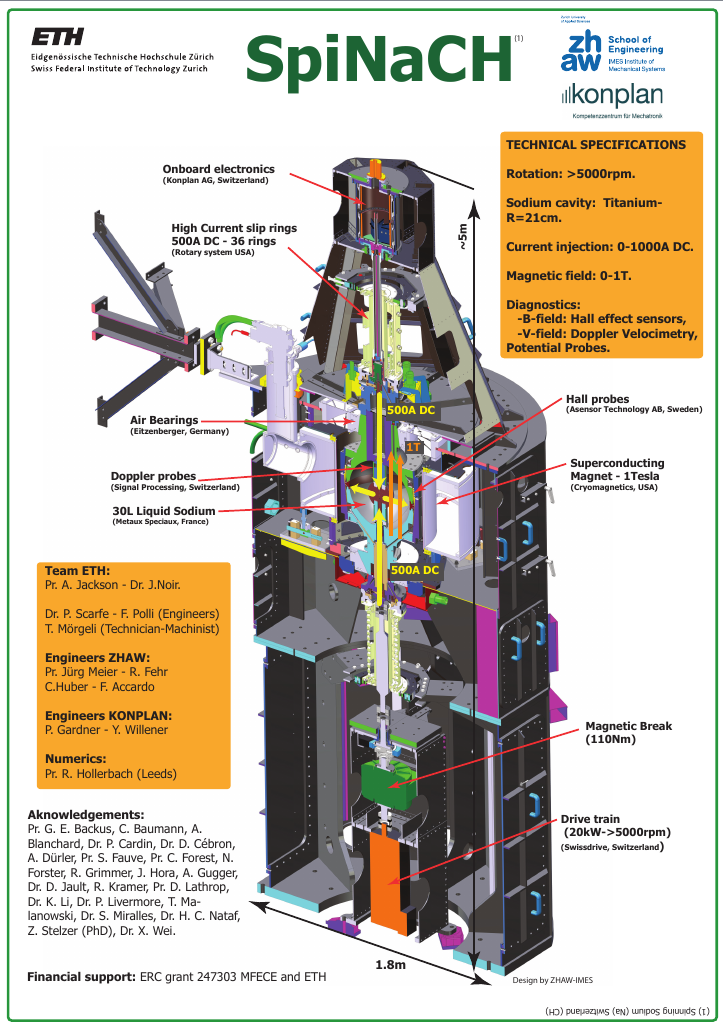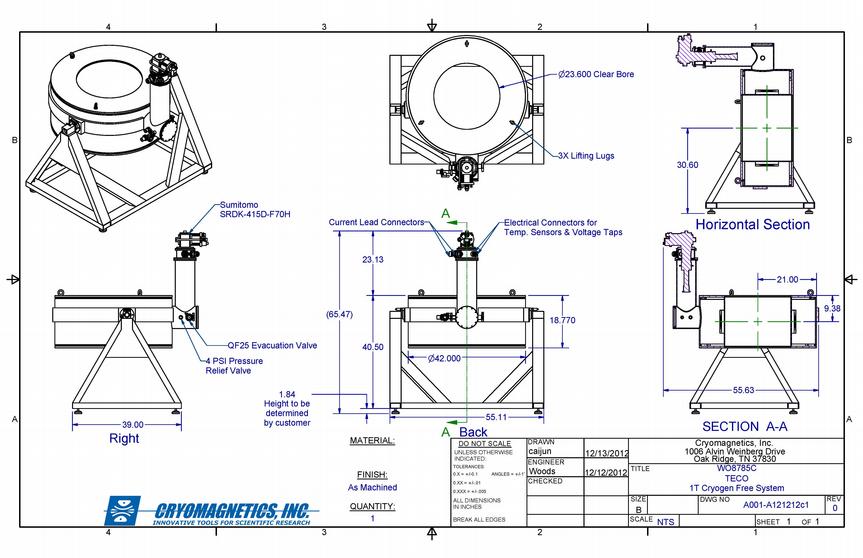Sodium experiments
SpiNaCH (Spinning Natrium in Confoederatio Helvetica)
The origin and evolution of planetary magnetic fields remain great mysteries of modern science. Despite the increasing knowledge in the field of magnetohydrodynamics, some first order features are poorly understood even though we believe they play a fundamental role in planetary bodies. This is for instance the case of the dynamics occurring in a conductive fluid subject to both strong rotation and strong background magnetic field. In such a situation, the fundamental forces in balance that control the flow are the Lorentz (magnetic) and Coriolis (rotational) forces, in contrast viscous forces remain negligible.
In order to shed light on this type of dynamics we are building an experimental setup that will allow us to achieve the above mention force balance and study how deviations from this first order flow is organized. The requirement in terms of rotational speed and fluid domain size, typically 5000 rpm, 42cm diameter spherical cavity, is on the edge of what is technologically possible. In addition, the problem of data acquisition to diagnose the system is an engineering challenge; the signature of the deviation to be studied are small in amplitude and the equipment that must be rotating with the experiment is subject to very high g-forces (~10,000 g). Beside the scientific interest, the setup we are developing will be a unique device setting a new milestone in experimental rotating fluid dynamics.
Setup
The choice of material of all part in contact with Sodium has been choose after deep laboratory compatibility tests. We provide the report of the tests by Cyril Huber as a PDF for anyone using liquid Sodium at temperature between 100C and 160C. In addition the report covers galvanic test using Copper alloy and Titanium grade 5.
The main conclusion of the tests is that Sodium is fully compatible with HNBR rubber material, Titanium and Copper alloy CuCr1Zr. No signi cant alteration of the materials during the galvanic test have been observed.
Status
Facilities
- The use of sodium requires special infrastructure, e.g. water proof environment, neutral atmosphere extinguishing system, stainless steel flooring and an dedicated alarm system. In addition, vibration damping layers have been incorporated in the concrete floor. After 20 months of remodelling, the room is ready to receive sodium filled experiment.
- The highly challenging engineering lead us to outsource the conception of the rotating part of the device to a team of turbine engineers. This task is currently in progress in collaboration with the ZHAW in Winterthur,
- The large bore, high magnetic field intensity can only be achieved using superconducting technology. We got a helium-cooled magnet which reaches up to 1 Tesla within a bore of 600 mm from external pageCRYOMAGNETICScall_made. Figure 2 is a preliminary drawing of the superconducting magnet with adjustable orientation. The magnet has been successfully operated in the ZUCCHINI experiment.
- The current injection system will be similar to the one in ZUCCHINI. It consists of 36 Delta Elektronika power supplies, each delivering up to 50 A.
- In order to diagnose the flow, we work together with Signal Processing on the development of novel ultrasonic Doppler velocimetry probes.
- In addition, the experiment will be diagnosed by Hall probes and potential difference probes.


